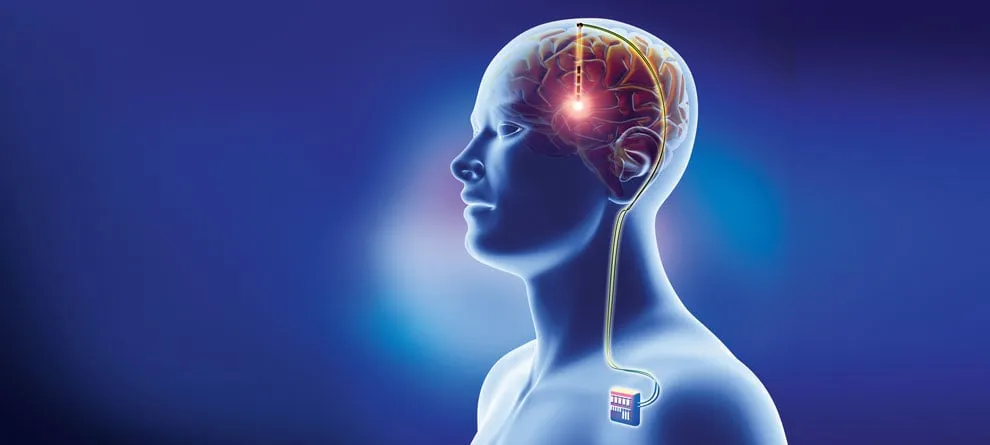
Demystifying DBS
By Sarah Stankorb
Ever since 1987, when deep brain stimulation (DBS) was first used to treat tremors, it has been heralded as offering new hope for people with Parkinson’s disease. DBS is a type of therapy used to deliver electrical pulses to certain areas of the brain, and it often relieves symptoms associated with PD—including muscle rigidity, tremor, slowness, gait problems, and involuntary body movements.
Sean Nagel, M.D., of Cleveland Clinic’s Center for Neurological Restoration, says his patients often ask about DBS after noticing differences in walking, increased rigidity, or reduced arm swing. In general, he explains, DBS works best among patients who have previously responded well to medication but who, because of wear-off, must continually dose or risk “freezing” (a sudden inability to move).
While DBS helps improve motor symptoms, results are inconclusive as to whether it affects nonmotor symptoms such as sleep, pain, cognitive issues, or bowel and bladder problems.
Most physicians wait at least four to five years after a Parkinson’s diagnosis before recommending DBS. There is no age limit, although the benefits of DBS tend to decrease with age and those over 80 rarely receive the procedure.
The most serious risks associated with DBS are the formation of blood clots in the brain (which can cause strokes) and infections. In most cases, though, patients go home soon after surgery without much discomfort. “Usually once the device is turned on,” says Nagel, “symptoms will improve pretty remarkably.”
How It Works
- A pacemaker-like device, called a neurostimulator, is implanted under the skin in your chest. This controls the level of stimulation delivered to the brain by the electrode. A clinician can program and adjust the device’s settings externally.
- An insulated wire under the skin connects the neurostimulator to the electrode. It runs from the scalp, behind the ear, down the neck, to the chest.
- The electrode, or lead, is placed inside the brain through a small hole drilled into the skull. It delivers electrical pulses to targeted areas of the brain.
- These pulses can block faulty electrical signals that cause tremors and other movement symptoms associated with PD.
Originally printed MoreThanMotion, Spring 2018.




